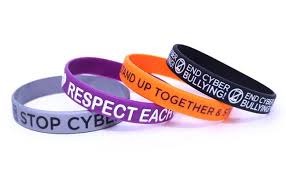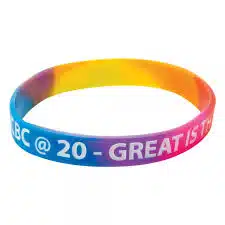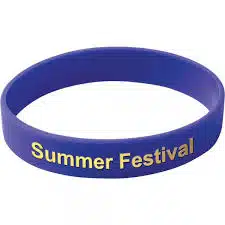Table of Contents
In the realm of accessories and functional products, wristbands have evolved far beyond mere decorative items or simple fitness trackers. From medical alert bands that save lives to fashion-forward pieces that define personal style, their design is a intricate blend of functionality, aesthetics, technology, and user-centricity. Decoding wristbands reveals a world where every stitch, material choice, and tech integration serves a purpose, and understanding these elements is key to appreciating their true value. In this article, we’ll take a deep dive into the design principles, material innovations, technological advancements, and user needs that shape modern wristbands, with a focus on decoding wristbands to uncover the stories behind their creation.

The Core Design Principles: Balancing Form and Function
At the heart of every successful wristband design lies the delicate balance between form and function—a principle that is central to decoding wristbands. Designers do not approach wristband creation as a one-size-fits-all endeavor; instead, they start by defining the primary purpose of the product, as this dictates every subsequent decision. For example, a medical wristband designed for patients with chronic conditions has vastly different requirements than a luxury fashion wristband or a sports performance tracker.
Functionality is the foundation. Medical wristbands, for instance, must prioritize durability (to withstand frequent handwashing and daily wear), legibility (so healthcare providers can quickly access critical information like allergies or blood type), and comfort (to be worn 24/7 without irritation). This means designers often opt for smooth, hypoallergenic materials and large, easy-to-read engraving or printing. On the other hand, sports wristbands focus on sweat resistance, flexibility (to move with the wrist during activity), and lightweight construction—features that ensure the band doesn’t hinder performance.
Aesthetics, while secondary to function in some cases, play a pivotal role in user adoption. Even medical wristbands are now being designed with customizable colors and sleek profiles to reduce the “clinical” feel, encouraging patients to wear them consistently. Fashion wristbands, meanwhile, leverage design elements like texture, pattern, and material combinations to align with current trends—think woven fabrics paired with metal accents or minimalist silicone bands in muted tones. Decoding wristbands shows that form never exists in isolation; it enhances function by making the product appealing and usable.
Another key principle in decoding wristbands is ergonomics. A wristband that fits poorly—too tight, too loose, or with sharp edges—will be discarded, regardless of its functionality. Designers use 3D modeling and user testing to create contours that conform to the natural shape of the wrist. For adjustable bands, they select fasteners (like buckle, magnetic, or slip-on) that are easy to operate yet secure. Children’s wristbands, for example, often feature quick-release clasps for safety and stretchable materials to accommodate growth, while adult fitness bands may use breathable mesh to prevent moisture buildup.

Material Innovation: The Building Blocks of Wristband Design
Materials are the unsung heroes of wristband design, and decoding wristbands requires a close look at the substances that bring them to life. The choice of material is determined by the band’s purpose, target audience, and desired lifespan, with each material offering unique advantages and limitations.
Silicone is one of the most versatile materials in wristband design, and its prevalence is a key insight when decoding wristbands. It is hypoallergenic, water-resistant, durable, and affordable—making it ideal for everything from children’s ID bands to fitness trackers. Advances in silicone technology have led to variations like conductive silicone (used in bands with touch-sensitive controls) and antimicrobial silicone (for medical and sports applications). Designers also appreciate silicone’s ability to hold vibrant colors and intricate textures, allowing for endless customization.
Metal remains a staple for luxury and formal wristbands, and decoding wristbands made of metal reveals a focus on quality and timelessness. Stainless steel is popular for its rust resistance and strength, while precious metals like gold and silver add exclusivity. Metal bands often feature detailed craftsmanship, such as laser engraving for personalized messages or link designs that balance rigidity with flexibility. For medical alert bands, titanium is a top choice due to its lightweight nature and biocompatibility, ensuring it’s comfortable for long-term wear.
Textiles are gaining traction in modern wristband design, especially for fashion and lifestyle products. Woven fabrics, such as cotton, polyester, and nylon, offer breathability and softness, making them perfect for casual wear. Technical textiles, like moisture-wicking polyester or stretchable spandex blends, are used in sports wristbands to enhance comfort during intense activity. Decoding wristbands with textile components shows that designers are increasingly blending fabrics with other materials—like silicone inserts for grip or metal hardware for structure—to create hybrid bands that offer the best of multiple worlds.
Eco-friendly materials are another growing trend in wristband design, reflecting consumer demand for sustainable products. Bamboo fiber, recycled plastic, and organic cotton are now being used to create bands that are both functional and environmentally responsible. For example, recycled PET plastic can be transformed into durable, water-resistant bands that look and feel like traditional silicone, while bamboo fiber offers natural antimicrobial properties. Decoding wristbands made from eco-friendly materials highlights how design is evolving to align with global sustainability goals.

Technological Integration: Smart Wristbands Redefine Design
The rise of smart technology has revolutionized wristband design, and decoding wristbands in the digital age means exploring how hardware and software seamlessly merge to create functional, intuitive products. Smart wristbands—including fitness trackers, smartwatches, and medical monitoring bands—require a holistic design approach that integrates sensors, batteries, displays, and connectivity while maintaining comfort and style.
Sensors are the backbone of smart wristbands, and decoding wristbands reveals how their placement and type are critical to accuracy. Fitness trackers typically include accelerometers (to measure movement), heart rate monitors (using optical sensors), and gyroscopes (to track orientation). These sensors must be positioned close to the skin to capture reliable data, so designers often place them in a raised module or a contoured section of the band. Medical monitoring bands may feature more advanced sensors, such as blood glucose monitors or ECG sensors, which require even more precise placement and calibration.
Battery life is a major concern for smart wristband users, and design plays a key role in maximizing efficiency. Decoding wristbands shows that designers use a combination of strategies: optimizing the size and placement of the battery (often in a slim module that doesn’t bulge), using low-power components (like OLED displays that only light up when touched), and incorporating energy-saving features (like automatic sleep mode). Some bands even use kinetic charging—generating power from the user’s movement—to extend battery life, eliminating the need for frequent charging.
Display design is another critical aspect of smart wristbands. The display must be easy to read in different lighting conditions (from bright sunlight to dim rooms) while being compact enough to fit on the wrist. Designers choose between various display types, including LCD (affordable and energy-efficient), OLED (vibrant colors and deep blacks), and e-ink (extremely low power, ideal for bands that show static information like time or activity stats). Touchscreen functionality is now standard, but designers also include physical buttons for users who prefer tactile controls—especially for tasks like navigating menus or taking measurements.
Connectivity is what makes smart wristbands “smart,” and decoding wristbands reveals how designers ensure seamless integration with smartphones and other devices. Bluetooth is the most common connectivity option, as it uses low power and allows for real-time data syncing. Some bands also include Wi-Fi for direct access to the internet (useful for receiving notifications without a phone nearby) or NFC for contactless payments. Designers must hide the antenna and other connectivity components within the band to maintain a sleek appearance, often placing them in the module or along the edges of the band.
User-Centric Design: Tailoring Wristbands to Diverse Needs
Decoding wristbands ultimately comes down to understanding the user—their needs, preferences, and pain points. Designers use user research, surveys, and testing to create bands that resonate with specific audiences, whether it’s children, athletes, seniors, or medical patients.
For children, wristband design focuses on safety, durability, and fun. Safety features include non-toxic materials, breakaway clasps (to prevent choking or strangulation), and bright colors that make the child easy to spot. Durability is key, as children are rough on accessories—designers use tear-resistant materials and reinforced stitching to ensure the band can withstand playtime. Fun elements like character prints, glow-in-the-dark accents, or customizable charms make children more likely to wear the band, whether it’s an ID band for school or a fitness tracker for encouraging physical activity.
Athletes have unique needs that shape wristband design, and decoding wristbands for sports reveals a focus on performance and practicality. Sweat resistance is non-negotiable, so designers use materials that repel moisture and prevent bacteria growth. Breathability is also important—mesh or perforated bands allow air to circulate, reducing irritation. Many sports bands include features like GPS tracking (for runners to map their routes), hydration reminders (for endurance athletes), and workout mode presets (for different activities like cycling or yoga). The band must also be lightweight and low-profile, so it doesn’t interfere with gripping equipment or moving the wrist.
Seniors benefit from wristbands designed with accessibility and safety in mind. Decoding wristbands for seniors shows that large, easy-to-read text is essential—whether it’s for displaying emergency contact information or activity data. Buttons and clasps are oversized for users with dexterity issues, and the band itself is lightweight and flexible to accommodate arthritis or joint pain. Medical alert bands for seniors often include GPS tracking and one-touch emergency buttons, allowing caregivers to locate the user and respond quickly in case of a fall or medical emergency. Some bands also monitor vital signs like heart rate and blood pressure, sending alerts to caregivers if there are any abnormalities.
Medical patients rely on wristbands for critical information, so design must prioritize clarity and reliability. Decoding wristbands for medical use shows that they are often color-coded (e.g., red for allergies, yellow for fall risk) to allow healthcare providers to quickly identify important details. The information—including name, date of birth, medical conditions, and medications—is engraved or printed using permanent, smudge-proof ink to ensure it doesn’t fade or rub off. Some medical bands are also waterproof and resistant to chemicals, so they can be worn during medical procedures or while bathing.
The Future of Wristband Design: Trends to Watch
As technology advances and consumer preferences evolve, the future of wristband design holds exciting possibilities. Decoding wristbands of tomorrow will likely reveal even more integration between technology and nature, with a focus on sustainability, personalization, and health.
Sustainability will continue to be a driving force, with more designers turning to recycled and biodegradable materials. We may see wristbands made from algae-based plastic (which breaks down in water) or mycelium (the root structure of mushrooms, which is durable and compostable). Additionally, modular design could become more common—allowing users to replace worn components (like the band or battery) instead of buying a new wristband, reducing waste.
Personalization will go beyond customizable colors and engravings. Decoding wristbands of the future may reveal bands that adapt to the user’s needs in real time—for example, a fitness tracker that adjusts its heart rate monitoring frequency based on the user’s activity level, or a medical band that changes color if it detects a rise in body temperature. 3D printing technology will make personalized fit more accessible, allowing users to order bands tailored to the exact shape and size of their wrist.
Health and wellness integration will become even more advanced. Smart wristbands may soon include sensors that can detect a wider range of health metrics, such as blood oxygen levels, stress hormones, and even early signs of illnesses like the flu. These bands will sync with healthcare providers’ systems, allowing for remote monitoring and early intervention. For example, a senior’s wristband could alert their doctor if their blood pressure becomes dangerously high, enabling timely treatment.
Conclusion
Decoding wristbands is a journey through the intersection of design, technology, materials, and user needs. Every wristband—whether a simple silicone ID band or a high-tech smart tracker—is the result of careful consideration of how it will be used, who will use it, and what value it will provide. From the ergonomic contours that ensure comfort to the sensors that capture vital data, every element serves a purpose.
As we’ve explored, the design of wristbands is not just about creating something that looks good or works well—it’s about creating something that enhances the user’s life. Whether it’s a parent feeling secure knowing their child’s ID band has emergency contact information, an athlete improving their performance with a fitness tracker, or a senior living independently with the help of a medical alert band, wristbands have a profound impact on our daily lives.
Decoding wristbands also reveals that the future of this product category is bright, with innovations in sustainability, personalization, and health integration on the horizon. As designers continue to prioritize user needs and embrace new technologies, wristbands will only become more essential, versatile, and meaningful. So the next time you slip on a wristband, take a moment to appreciate the thought and expertise that went into its design—you’ll be seeing it in a whole new light.
Click here for more information about wristbands: https://www.topwristband.com
Reference Website:https://www.theregister.com/2025/07/23/meta_wristband_ui_control/